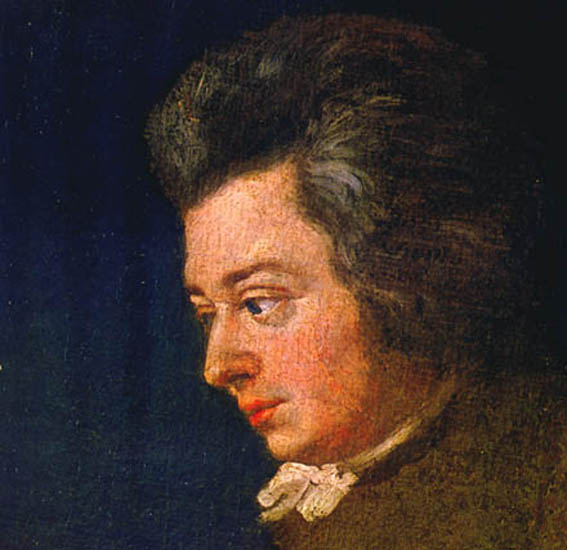Darien Library presents a new four-week, Tuesday lecture series on music and faith taught by Gil Harel. (Watch his previous lectures.) All lectures take place from 7 to 8 p.m. in the Community Room at Darien Library.
— an announcement from Darien Library
Liturgical Music in the Age of Enlightenment: Mozart and Haydn
European society changed dramatically in the second half of the 18th century, and as it did, so did the role of music in the church.

This painting, regarded by historians as the most accurate surviving likeness of Mozart, was created when the composer was 26 years old. It is a section of an unfinished 1782 portrait by Joseph Lange. The splotchy texture of the composer’s cheeks, visible in the original painting on display at the Mozart Museum in Salzburg, was verified by Mozart’s contemporaries. — caption from Wikimedia Commons
In this era where philosophers touted the supremacy of reason over dogma, liturgical music often took on the characteristics of then-contemporary music. In this era, melody was king and simple, homophonic textures prevailed.
Franz Josef Haydn is often credited as the “father” of the symphony and the string quartet, but he was also a prolific writer of church music.
Here we will consider his “Missa in tempore belli” (Mass in Time of War), written during the tense years preceding the Napoleonic Wars.
Mozart’s approach to church music incorporates different everything from baroque counterpoint to soaring operatic melody. Both are on display in his C Minor Mass.
About the Presenter
Gil Harel (PhD, Brandeis University) is a musicologist and music theorist whose interests include styles ranging from classical repertoire to jazz and popular music, as well as opera, medieval, and renaissance music.

Photo from Dr. Gil Harel Lectures Facebook account
Gil Harel
Previously, he has served on the faculty at CUNY Baruch College, where he was awarded the prestigious “Presidential Excellence Award for Distinguished Teaching”, as well as the Southwestern University of Finance and Economics in Chengdu, China.
Currently, he teaches at Naugatuck Valley Community College, where he was recently presented with the coveted “Merit Award for Exemplary Service to the College.”
At NVCC, Dr. Harel conducts the college chorale, teaches music history and theory, and serves as musical director of theater productions. Outside of teaching, he enjoys staying active as a pianist and vocalist.
